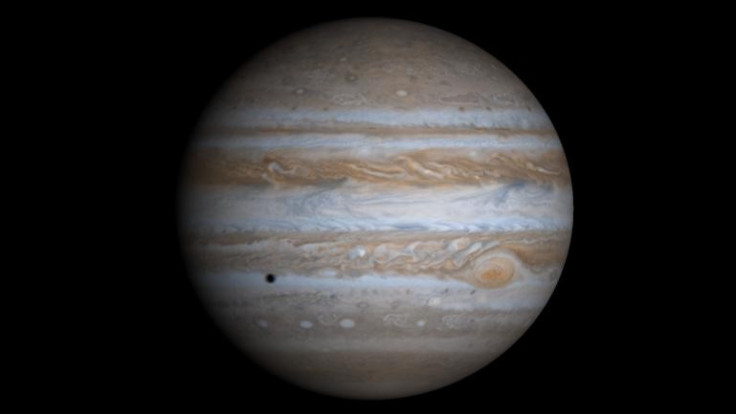Jupiter’s Melting Core Clarifies Makeup Of Recently Discovered Planet

Jupiter's core is melting, an observation that may help answer questions about a recently-discovered planet with an unusual density, according to a new study. Researchers found that Jupiter's rocky core is most likely melting and mixing with the rest of the planet, which could explain the Jupiter-like planet discovered in February.
Planetary scientists previously figured Jupiter formed from layers of gas enveloping a rocky core of heavy elements, but evidence shows the planet is actually a hodgepodge of elements mixed together, according to the study.
People have been working on the assumption that these planets are layered because it's easier to work on this assumption, Hugh Wilson, study coauthor and planetary scientist at the University of California Berkeley, told Inside Science News.
Scientists have considered that Jupiter's core could be melting but no one worked out the calculations, Wilson said.
Jupiter is the largest planet in the solar system made up chiefly from hydrogen and helium. Researchers were unable to recreate the extreme conditions on Jupiter - conservative estimates put the temperature at 12,500 degrees Fahrenheit (7,000 degrees Celsius) with pressure 40 million times greater than on Earth. Instead, planetary scientists simulated the harsh conditions with a computer program.
The computer program showed that magnesium oxide, a mineral likely found in Jupiter's core, liquefies and begins mixing with the rest of the planet at the simulated temperatures. Other Jupiter-like planets have similar internal structures, which would explain how a planet with the same volume as Jupiter has five times more mass, researchers said.
In February, astronomers discovered CoRoT-20b n , a planet so dense its core would have to make up half of the planet's mass, according to the study. Jupiter's core makes up 3 and 15 percent of its mass.
It's much easier to explain the composition of [CoRoT-20b] under a model where you have a mixed interior, Wilson told Inside Science News.
The team that discovered the CoRoT-20b postulated that the planet could have a mixed core and the current Jupiter study gives the theory more credibility, though it's possible CoRoT-20b formed from the collision of two gas giants, Wilson said.
The journal Physical Review Letters published the study on March 14.
The researchers said they hope to gain more information about Jupiter when NASA's Juno probe reaches the planet in 2016. The probe will orbit around Jupiter and investigate the planet's composition, origin and gravitational field before crashing into the planet a year later.
© Copyright IBTimes 2024. All rights reserved.





















